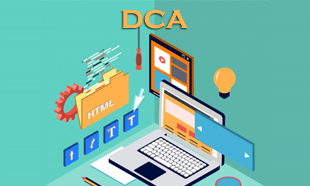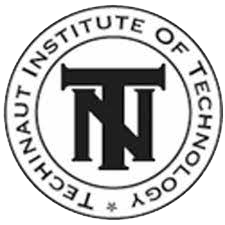0
Embark on a transformative journey with Ashish Academy's Diploma in Computer Application course in Jeypore, Koraput, Odisha. Master essential software tools, programming languages, and IT skills. Propel your career in the dynamic world of technology.
DIPLOMA IN COMPUTER APPLICATION
In the ever-evolving landscape of technology, proficiency in computer applications has become essential for individuals aspiring to thrive in various professional domains. Recognizing the significance of equipping individuals with comprehensive computer skills, Ashish Academy, a Techinaut Institute of Technology franchise in Jeypore, Koraput, Odisha, offers a six-month course named "Diploma in Computer Application (DCA)." This comprehensive program allows students to delve into computer science, covering various topics essential for navigating the digital age.
THE OBJECTIVE OF THE COURSE:
The primary objective of the Diploma in Computer Application (DCA) course is to provide participants with a solid foundation in computer science and practical skills in various computer applications. Through a structured curriculum and hands-on training, the course aims to develop participants' proficiency in essential software tools, enhance their problem-solving abilities, and prepare them for diverse career opportunities in information technology. By the end of the course, participants will be equipped with the knowledge and skills necessary to excel in the dynamic and competitive world of computing.
COURSE OVERVIEW:
Section 1: Basics of Computer
The course commences with an exploration of the basics of computer science, providing participants with a foundational understanding of computer hardware, software, and peripheral devices. Topics covered include the history and evolution of computers, the fundamental principles of computer organization, and the role of various components such as the central processing unit (CPU), memory, and storage devices.
Section 2: Computer Organization
Building upon the basics, participants delve deeper into computer organization, gaining insights into the architecture and components of modern computing systems. They learn about the function and interaction of hardware components, including the motherboard, chipset, and input/output devices. Additionally, participants explore the concept of system buses, memory hierarchy, and storage technologies.
Section 3: Operating System
In this section, participants receive comprehensive training in operating systems, understanding their role in managing computer hardware resources and facilitating user interaction. They explore operating systems, including Windows, macOS, and Linux, and learn basic system operations, file management, and troubleshooting techniques. Moreover, participants gain practical experience installing, configuring, and administering operating systems.
Section 4: Word Processing
Most of the course is dedicated to mastering word processing software, such as Microsoft Word. Participants learn to create, edit, format, and manage documents efficiently using features such as styles, formatting tools, and document templates. They also explore advanced functionalities, including mail merge, collaboration tools, and document security measures.
Section 5: Spreadsheet Package
Participants acquire skills in using spreadsheet software, such as Microsoft Excel, for data analysis and manipulation. They learn to create, format, and manage spreadsheets effectively, using features such as formulas, functions, charts, and pivot tables. Additionally, participants explore advanced functionalities, including data validation, conditional formatting, and macros.
Section 6: Presentation Package
In this section, participants learn to design and deliver impactful presentations using software like Microsoft PowerPoint. They explore design elements, including slide layouts, themes, and transitions, to create visually engaging presentations. Participants also learn to incorporate multimedia elements, such as images, videos, and audio clips, to enhance the effectiveness of their presentations.
Section 7: Introduction to the Internet
Participants are introduced to the Internet and learn its history, infrastructure, and critical services. They learn to navigate the web effectively, use search engines to find information and evaluate online resources for reliability and credibility. Additionally, participants explore internet safety and security measures, including safe browsing practices and protection against online threats.
Section 8: Electronic Mail
Participants gain proficiency in using email as a communication tool, learning to create, send, receive, and manage emails efficiently. They explore features such as email composition, attachments, folders, and filters to organize their inbox and streamline communication. Moreover, participants learn about email etiquette and best practices for professional communication in a business environment.
Hands-On Training and Practical Projects
Participants engage in hands-on training sessions and practical projects throughout the course to apply their knowledge and skills in real-world scenarios. They work on assignments, case studies, and collaborative projects that simulate the demands of the workplace, allowing them to demonstrate their proficiency in computer applications and problem-solving abilities.
CONCLUSION:
In conclusion, the Diploma in Computer Application (DCA) course offered by Ashish Academy provides participants with a comprehensive understanding of computer science and practical skills in various computer applications. Through a structured curriculum and hands-on training, participants develop proficiency in essential software tools, enhance their problem-solving abilities, and prepare themselves for diverse career opportunities in information technology. With its focus on practical skills and real-world applications, the DCA course equips participants with the knowledge and skills necessary to succeed in the dynamic and competitive computing world.


